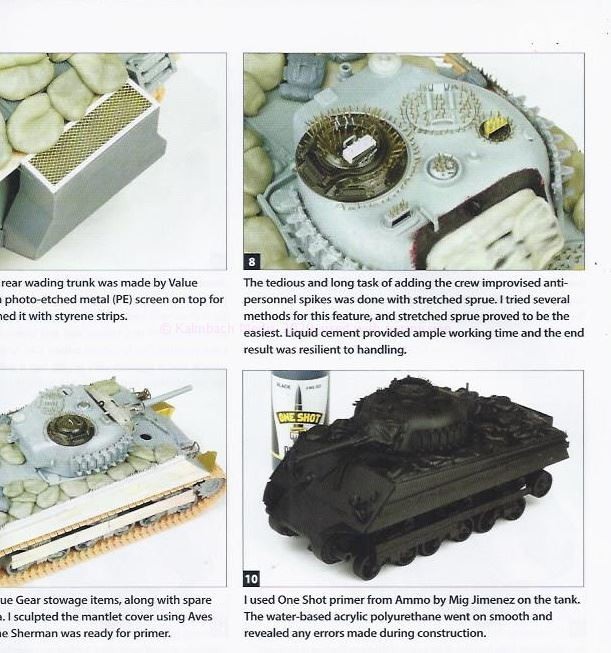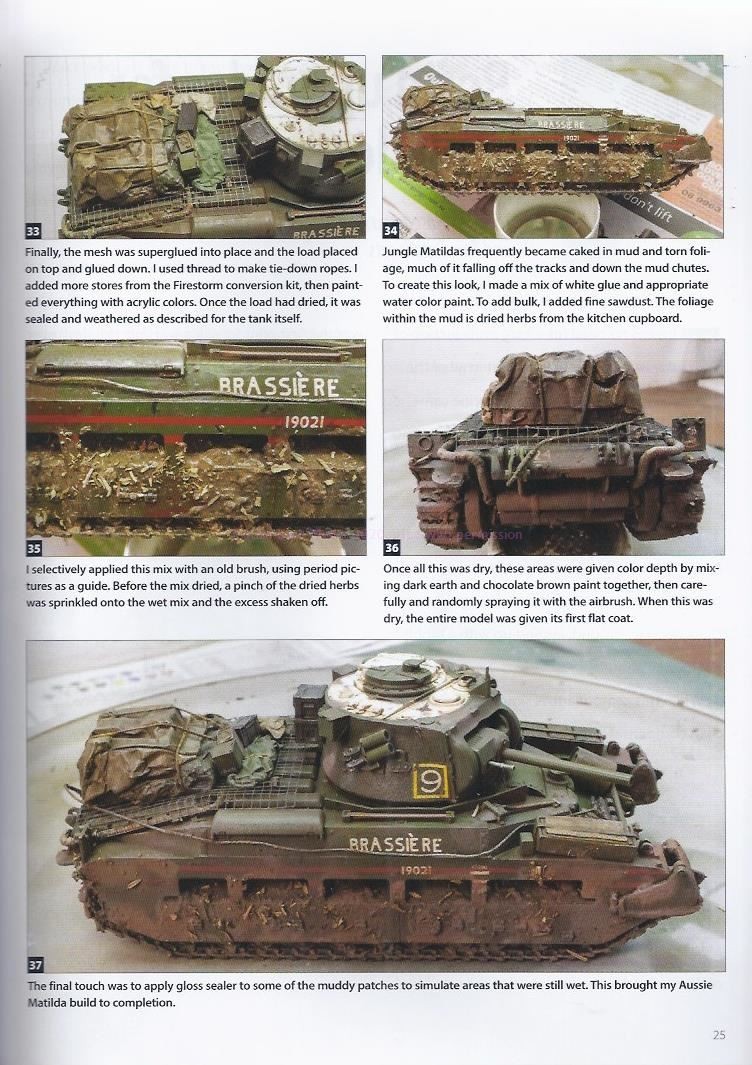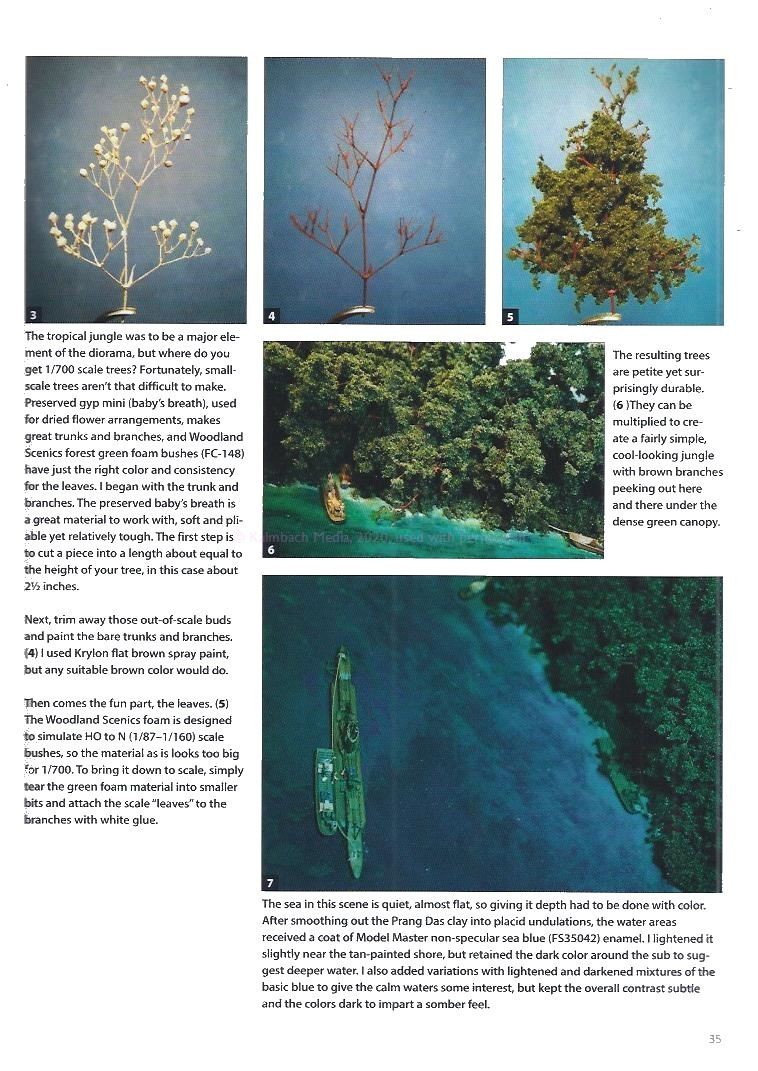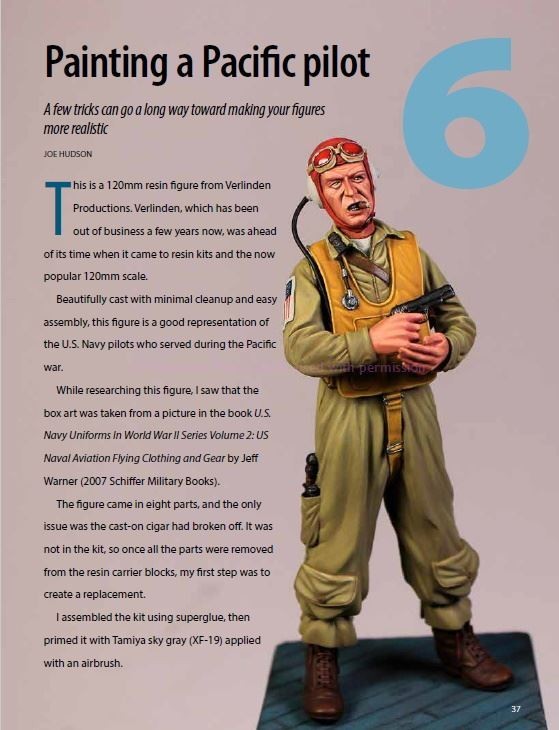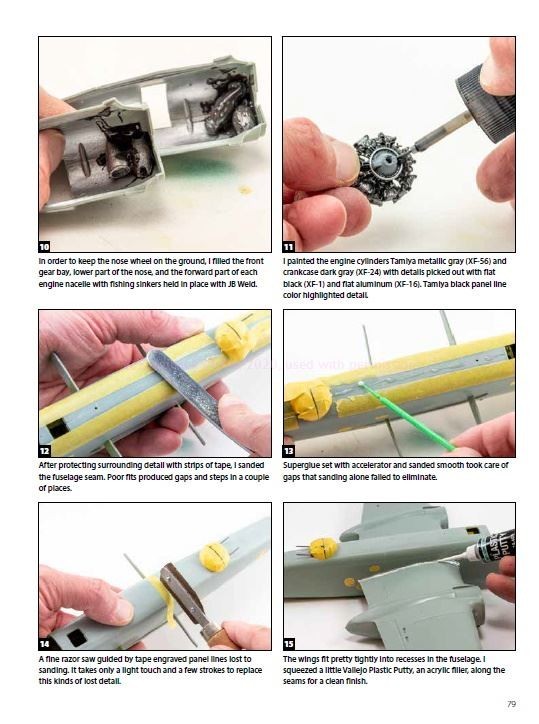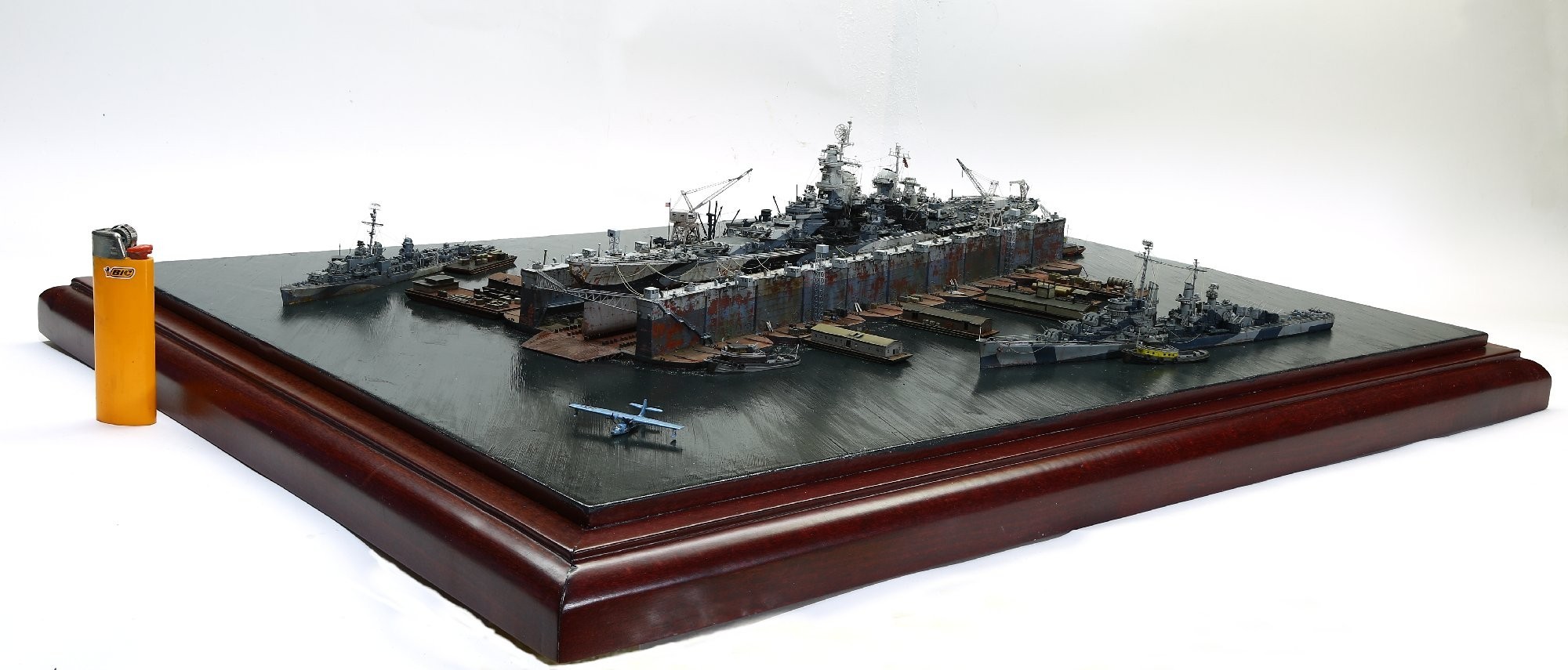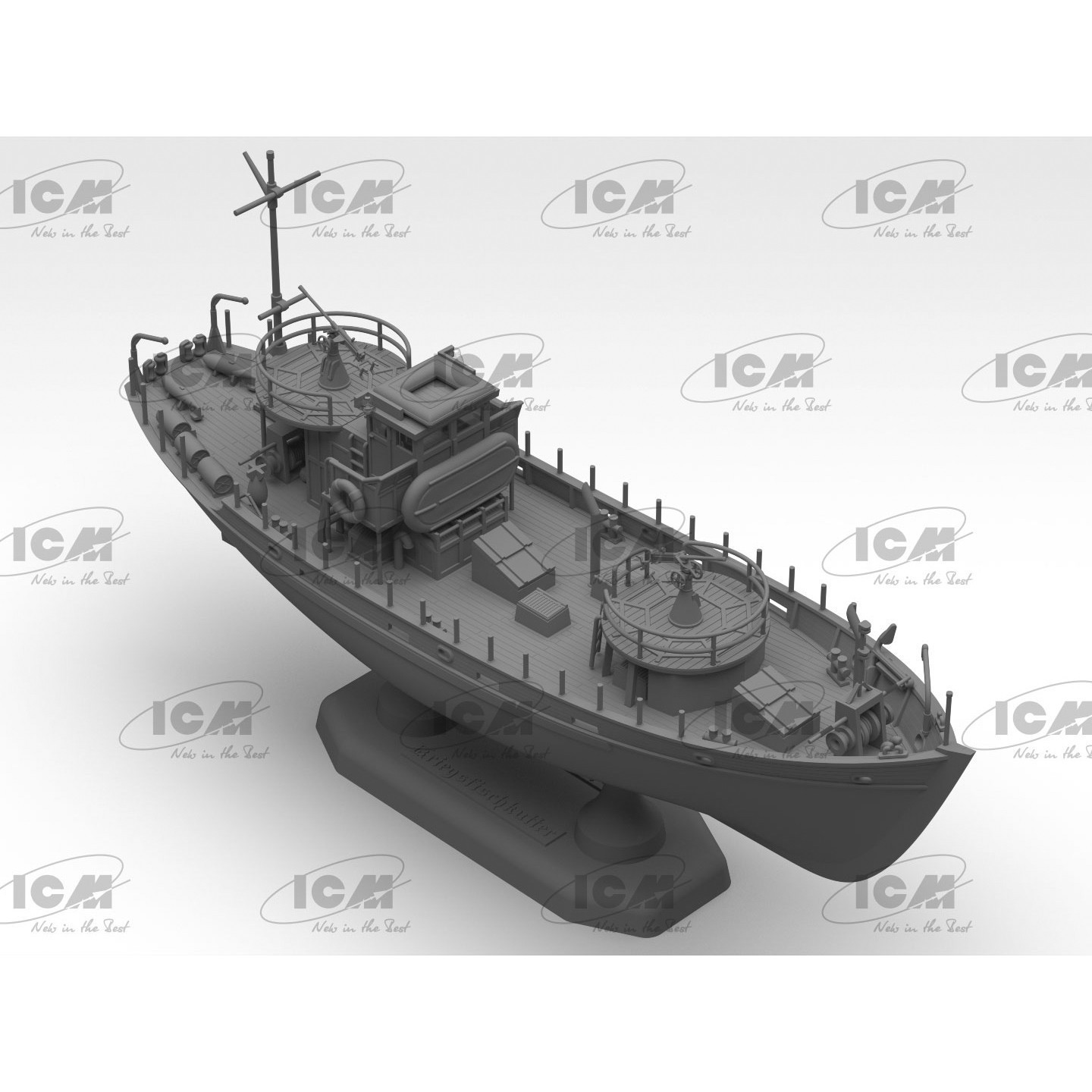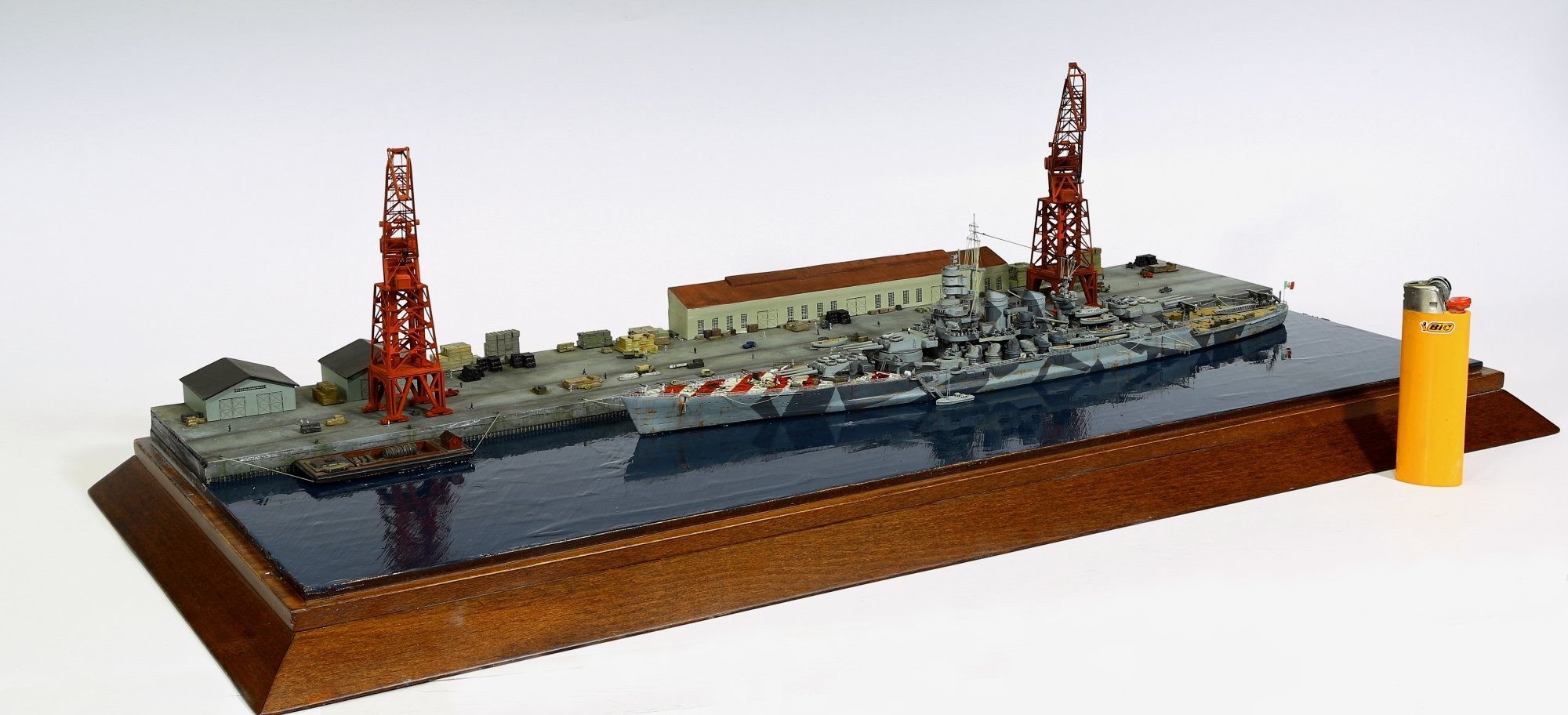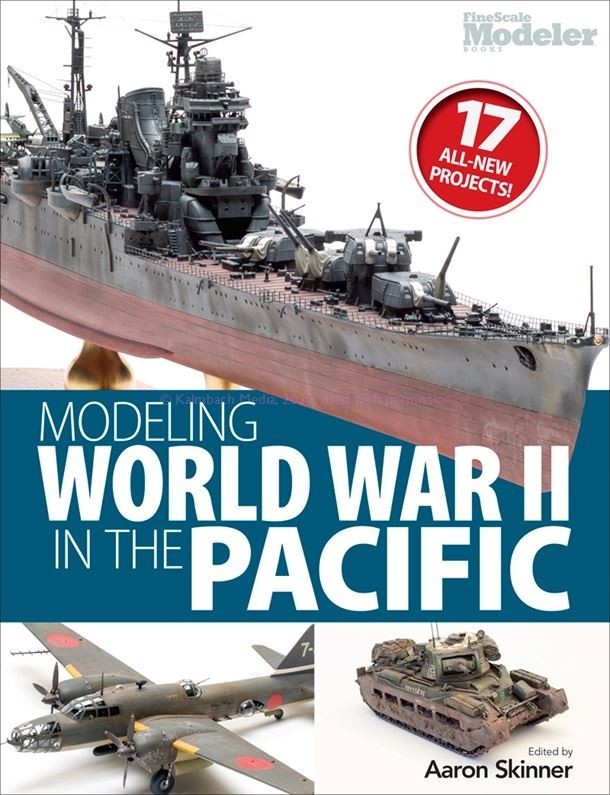
Modeling World War II in the Pacific
Item #12822
ISBN 9781627007245
Author: Edited by Aaron Skinner
Size: 8.25 x 10.75
Pages: 144
Color photos: 410
Introduction
Modeling World War II in the Pacific is a book from Kalmbach Media, one of their FineScale Modeler books. Numerous authors contributed to the content which is edited by well-known modeler Aaron Skinner. Content is delivered through 143 pages of content in standard size softcover format. The softcover is catalogued with ISBN 9781627007245 and Kalmbach's catalogue number 12822. Kalmbach describes this book:
- The all-new book, Modeling World War II in the Pacific, features a variety of modeling subjects including the equipment used in the island-hopping campaigns, Marine Corps-modified armor, unique Navy aircraft used in carrier battles and more. Released around the 75th anniversary of the end of World War II in the Pacific, you’ll find aircraft, armor, figures and an emphasis on ship modeling projects from FineScale Modeler’s Aaron Skinner and other top modeling experts. Each project features clear instructions and step-by-step photos, as well as detailed text and helpful tips.
Flipping through the pages I see page after page of models that send me running to the stash and arranging my tools and paint, exclaiming 'I can do that,' or at least enjoy any failed attempt.
Content
Modeling World War II in the Pacific presents these subjects:
- Introduction –Aaron Skinner………………………………4
1 Righting a wrong – Luke Easter………………………………6
The recovery of the USS Oklahoma BB-37
2 An early war SB2U Vindicator – Frank Cuden……………13
Special Hobby’s 1/72 scale kit helped fit this Midway bomber into a crowded showcase
3 A Matilda for the jungle – Andy Cooper……………18
Australian forces found modified British Matilda tanks were effective against the Japanese in the Pacific
4 Resin upgrades for a Wildcat – Vladimir Kafka……………26
The 1/72 Hasagawa kit benefits from Quickboost and TrueDetails sets
5 Mission: Resupply! – Tim Reynaga……………33
Building Fujimi’s pint-sized cargo sub in a realistic diorama setting
6 Painting a Pacific pilot – Joe Hudson……………36
A few tricks can go a long way toward making your figures more realistic
7 Lighting strikes – Albert Tureczek……………44
Tamiya’s new 1/48 scale P-38 builds well right from the box. Painted roundels aided in the weathering plan
8 Getting his feet wet with IJN Tone – Chuck Davis……………52
Tamiya’ 1/350 scale model of the cruiser proved to be a perfect intro to ship modeling for an airplane guy
9 A Canadian in the RAF – John Mahar……………66
Tamiya’s 1/32 Spitfire makes an excellent starting point for this South East Asia Command fighter
10 Weathering a strafer – Aaron Skinner……………76
Painting Italeri’s B-25G Mitchell for the southwest Pacific
11 Hairspray on a Peggy – Chuck Davis……………84
Hasagawa’s 1/72 scale bomber gets an old-school chipping treatment
12 Tico ready for launch – Aaron Skinner……………94
Camouflaging Trumpeters small-scale Essex-class carrier
13 Building an LVT-4 for Okinawa – Andy Cooper……………103
AFV Club’s 1/35 scale LVT-4 just needs judicious finishing to make it a standout model
14 Sands of Iwo Jima – John Bonann……………111
A photo of a Sherman tank disabled in the black sands inspired this vignette
15 Fade to black – Chuck Davis……………120
Techniques to keep and all-black P-61 night fighter from looking like a toy
16 Building a unique Zero – Anders Isaksson……………126
Tamiya’s new 1/72 kit meant it was time to tackle the subject again
17 ‘Hello again!’ – Darren Roberts……………132
Monogram’s 1/48 scale Devestator was the basis of a scene set 6,500 feet below the ocean’s surface
FineScale Modeler generates a steady supply of excellent articles and this book capitalizes on their experience, in a well-organized and easy to read format. The contributors and Kalmbach produce high quality content that is geared for hobbyists and those familiar with a subject, yet are not over the head of novices.
This is mainly a visual presentation. Each subject begins with a short introduction and then progresses with detailed step-by-step progress. Captions in English narrate the images. The captions are well written and explain the accompanying photographs in great detail. The captions go into very specific detail as to the specific kit shown, brands of paint used, additional detailed items such as photo-etched brass, types of masks and stencils used, and other such pertinent information as well as individual processes used by the individual modelers.
While I will not recount each model in this book, I will highlight a few that are particularly impressive.
Righting a wrong is a 1/350 masterpiece of scratchbuilt derricks and winches used to recover capsized USSOklahoma. Sands of Iwo Jima features a tank festooned with scores of scratchbuilt scale nails and shards as anti-personnel measures. Wood and resin extra armor is also used by the modeler. A Matilda for the jungle isn't as exotic but demonstrates adding aftermarket conversions and heavy mud. Good things come in small packages as seen in Mission: Resupply! by Tim Reynaga - a modeler well known here on Model Shipwrights. It combines modifying and enhancing tiny models with photo-etch and other accessories, creating a water base, trees for jungle, and action portrayed by 1/700 figures. Getting his feet wet with IJN Tone is a detailed account of creating a highly detailed model. Finally, ‘Hello again!’ amazes me with the techniques to model a wreck down deep in the ocean.
Really, all of the projects in this book bust the curve of modeling prowess. With dioramas and stand-alone subjects of aircraft, figures, ships, and tanks, there is something for every modeler.
Photographs
Plenty! Most are full color, too. Reference photos from the war are black-and-white but I didn't notice any model photos that are.
Graphic support of the text has always been a strong suite of Kalmbach and this book continues that trait. Each subject starts with a primary photo of the finished scene. Multiple in-progress images visually guide the reader through the process. These photos are equally valuable as they afford inspiration extracurricular to the described subject. Each page has one to six photos although there are a few with more than six. A few chapters have text boxes listing references and special products used for the model.
Conclusion
Modeling World War II in the Pacific with its series of up-to-date methods and products and techniques should be a desired addition to modeling bookshelves. The crossover potential of many techniques are good whether you build tanks, ships, or any subject. The content of up-to-date ideas and products is a strong point of this book. So is the excellent graphic support of the educational text.
If there is any drawback to this book, I don't see it. There are three typos on the Content page – “Hasegawa” is misspelled, as is “Devastator,” although both names are correctly spelled in each chapter. Modelers should appreciate the content whether one prefers shake-and-bake kits, loves to add every resin and photo-etch enhancement available, or delights in dioramas. I recommend this book.
Please remember to mention to vendors and retailers that you saw this book here - on Model Shipwrights.
